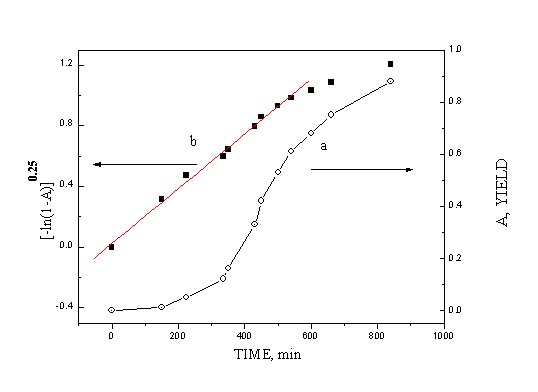
| Home | Authors | Publications | Lectures | Links |
V.V. Serdobintseva, D.V. Kalinin
Active participation of dispersed and colloidal systems in hypergene and hydrothermal processes favors supramolecular crystallization during mineral formation. We discus the mechanism of the crystallization by the example of monodisperse silica suspensions. The phase transition from suspensions to supramolecular crystals occurs at the limiting concentration of structural units (“dense liquid”) according to the model of Alder-Hoover. The kinetics of the interface motion is described by the Frenkel theory of liquids and solids. The linear growth of the crystals follows the model of the rough interface and is described by the equation derived from the Frenkel theory. We also discuss the mechanism of crystal growth which takes into account polarization of structural units,
Kinetics of the relative crystal mass yield (a) and linear plot of this kinetics in coordinates of the Avrami-Erofeev equation (b)